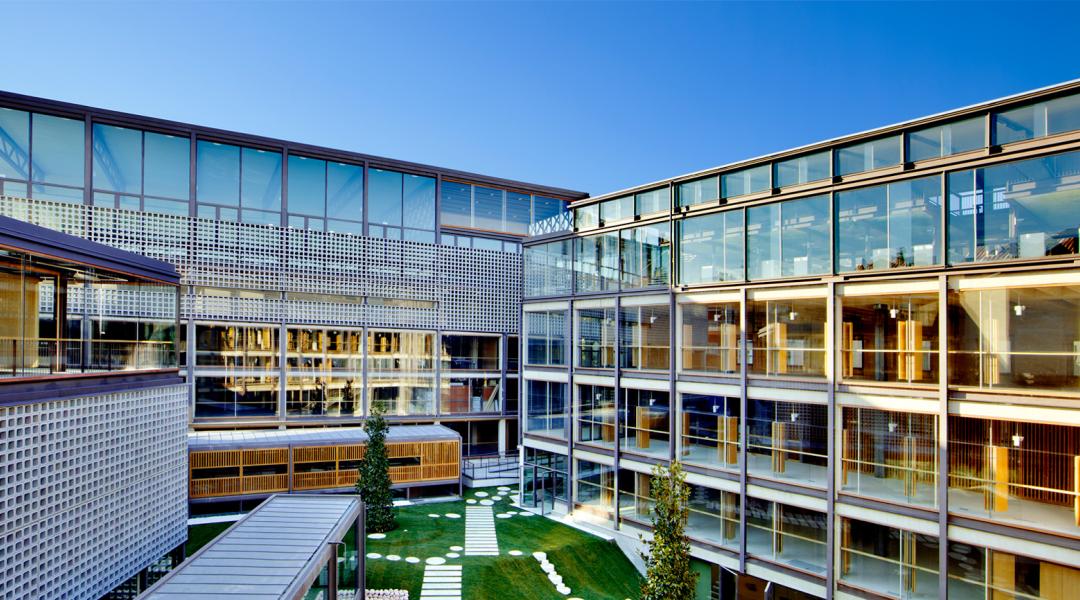16th Architecture Week
Madrid Opens its Doors

The Madrid Official Professional Association of Architects (COAM) is celebrating its 90th anniversary, and its legendary 'Arquitectura' magazine is turning 100. Two great reasons to host an architecture week in the Spanish capital, an international benchmark in the field.
Following previous editions devoted to other European cities such as Milan or Paris, the 16th Architecture Week has wanted to celebrate two major anniversaries in Madrid, the backdrop to the lives of millions of Spaniards. In the words of Belén Hermida, Dean of the COAM, “for seven days, we will bring architecture closer to society and vice versa, we will bring the architecture and the development of city of the future to society as a whole, highlighting the valuable architectural heritage that makes Madrid a world benchmark.” Because Madrid is a magnificent city, “thriving and global, with an endless offer and enormous potential, constantly changing and with important challenges ahead,” Hermida emphasizes.
There is no doubt this Architecture Week edition (from September 30 to October 7) has been very carefully planned to become one of the unmissable events of the season. In fact, the program seems not to have an end. One of the novelties this year, which will run for the next few months, is the Rethinking Madrid Discussion Series, around the future of the city in different areas: Urban Planning, Crisis, Housing and Environment. The Arquitectura magazine’s 100th anniversary celebrations will kick off with a retrospective exhibition devoted to the evolution of Madrid as a city. Children's activities will be organized for the entire family and, as in previous editions, there will be tours around the city and visits to over 100 iconic buildings of different styles and periods. The Fernando Higueras Instituto de Patrimonio Cultural; the Gimnasio Maravillas, by Alejandro de la Sota; the Bank of Spain, by Severiano Sainz de Lastra and Eduardo de Adaro Magro; the Fundación Francisco Giner de los Ríos, redesigned by the amid.cero9 studio, and the COAM facilities in the Old San Antón Pious Schools, spectacularly rehabilitated by Gonzalo Moure Studio, are just some of the landmarks to see, know and enjoy.
Come and see…
As any self-respecting special celebration, it will also offer outstanding exclusive visits to three buildings that will open its doors to the public for the first time: the original and meticulously rehabilitated Frontón Beti-Jai, built in 1893 by Joaquín de Rucoba Octavio de Toledo; the majestic Salón de Reinos of the Buen Retiro Palace by Juan Bautista Crescenzi and Alfonso Carbonel (1633); and the modern, unique Casa Carvajal, designed in 1968 by its owner, architect Javier Carvajal Ferrer.
“Madrid has always relied on excellent Spanish architects, who have defined the current cityscape, from Gómez de Mora and Juan de Villanueva to Secundino Zuazo; from Antonio Palacios to modern masters such as Sáenz de Oiza and Rafael Moneo. Madrid has favoured architecture to the point that it is now a city where new buildings coexist with old, rehabilitated ones,” says Belén Hermida.
“Architecture is the backdrop against which citizens develop and interpret their lives”
In recent years, Madrid has experienced a great architectural boom and international presence thanks to state-of-the-art projects that have now become benchmarks, among them the Adolfo Suárez Madrid-Barajas airport, the Mirador building, Madrid Rio, the renovation of the Prado Museum, and the Matadero Centre For Contemporary Creation. “And don’t forget projects like Cuatro Torres, which will soon have a new addition—the Caleido Tower, and other projects like the recent Wanda Metropolitano Stadium,” Hermida points out. Moreover, many of these projects are the work of Spanish architects, giving them a symbolic value that is helping project Madrid beyond our borders.
“I think this process of conversion and progress is never ending. It’s a process of constant updating and renewal. Architecture changes, advances and evolves as society itself, to the rhythm of changes in regulations, new building solutions, and the needs of people. Architecture is the backdrop against which citizens develop and interpret their lives. That is why it’s vital that architects take advantage of any opportunity to reinvent the city and rethink the way it is built,” the COAM Dean stresses.
There is no doubt that Madrid has gradually rediscovered all its possibilities to become increasingly beautiful and modern, although there is still a lot of work to do. Environmental protection policies, the promotion of green areas, the pedestrianisation of parts of the city... “There are many issues that should be considered, and architecture is a great tool to project us onto the future."
El porvenir de la capital
En los próximos años, a la capital española le esperan grandes novedades arquitectónicas. Desde el casi inminente edificio Axis, en la céntrica plaza de Colón, pasando por la rehabilitación y recuperación de siete edificios históricos que integran el Complejo Canalejas, hasta una de las necesidades más apremiantes de la ciudad que la arquitecta y profesora Belén Hermida reconoce como uno de los proyectos más discutidos, ambiciosos y relevantes de los últimos años: Madrid Nuevo Norte. “Se trata de una gran oportunidad para poner en práctica, en un contexto real, nuevas estrategias de crecimiento de la ciudad y de movilidad, para revisar nuevas soluciones de vivienda, o la gestión de residuos, por ejemplo. Espero que sepamos aprovechar lo que tiene de campo de experimentación para repensar la ciudad de acuerdo con nuestro lugar y nuestro tiempo, porque en mi opinión, más que arquitectura icónica o grandes obras, lo que debemos esperar y exigir como ciudadanos es resolver el gran vacío urbano del norte de Madrid”.
“Llevar la profesión al siglo XXI, para llevar la ciudad al siglo XXI”, como recuerda la decana del COAM, será el mayor objetivo de los arquitectos españoles para las próximas décadas, amén de reforzar el vínculo de la arquitectura con la ciudadanía para dar forma a la idea de ciudad y convivencia de la que tanto se hablará en esta espectacular y casi apoteósica XVI Semana de la Arquitectura.








